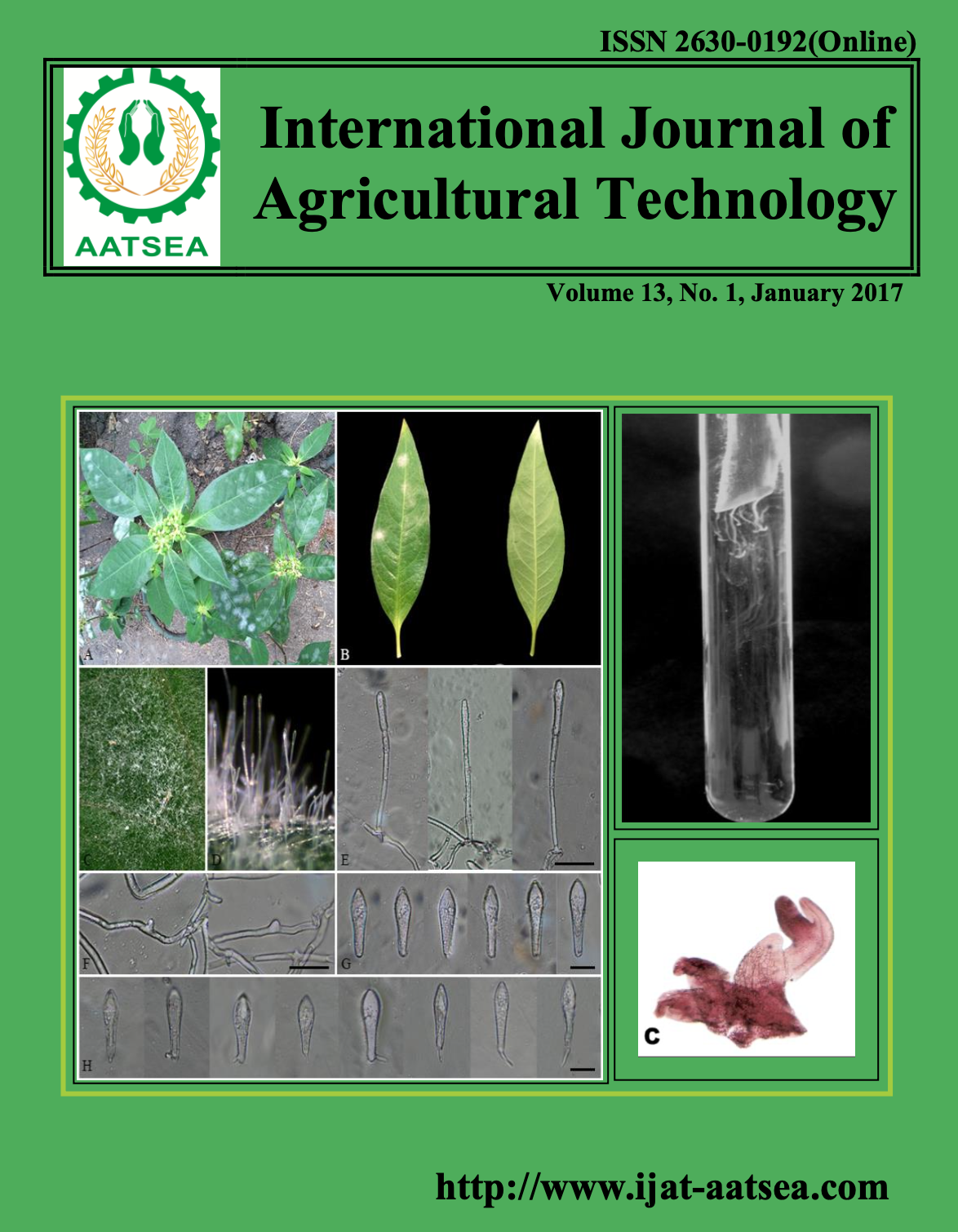The production of flavor microcapsules from shrimp waste
Main Article Content
Abstract
The objective of this study was to use microencapsulation to produce flavor microcapsules from whiteleg shrimp heads. The flavor extraction from shrimp head waste (protein hydrolysate) was carried out using neutrase and alcalase at ratios of 0: 2, 0.5: 1.5, 1: 1, 1.5: 0.5 and 2: 0 mixed with shrimp head (98%). The optimal ratio of neutrase to alcalase is 1:1 as it had the highest degree of hydrolysis and the lowest bitterness intensity based on sensory evaluation. Maltodextrin concentrations of 10, 20, 30 wt% were used to encapsulate protein hydrolysate using a spray drying technique. As the percentage of maltodextrin in coating material was increased, the moisture content and water activity of flavor microcapsules decreased whereas solubility index increased.
Article Details

This work is licensed under a Creative Commons Attribution-NonCommercial-NoDerivatives 4.0 International License.
References
Jafari, S. M., He, Y. and Bhandari, B. (2007). Role of powder particle size on the encapsulation efficiency of oils during spray drying. Drying Technology 25:1081-1089.
Jodnak, S. (2013). Biological activity of tilapia bone protein hydrolysate and its effects on osteoblasts. M.S. Thesis in Nutraceutical and Functional Food. Faculty of Agro Industry, Prince of Songkla University, Thailand.
Khunthawad, A. and Sripui J. (2013). Effects of Encapsulattion by Spray Drying on Physical Properties of Mamao (Antidesma thwaitesianum) Powder. Graduate Research Conference. Khon Kaen University, Thailand. 386-391.
Madene, A., Jacquot, M., Scher J. and Desobry, S. (2006). Flavor encapsulation and controlled release: a review. International Journal of Food Science and Technology 41:1-21.
McNamee, B. F., White, L. E., O’Riordan E. D. and O’Sullivan, M. (2001). Effect of partial replacement of gum arabic with carbohydrates on its microencapsulation properties. Journal of Agricultural Food Chemistry 49:3385-3388.
Milton, C. C., Stringheta, P. C., Ramos, A. M. and Vidal, C. (2005). Effect of the carriers on microstructure of mango powder obtained by spray drying and its functional characterization. Innovative Food Science and Emerging Technologies 6:420-428.
Nilsang, S., Lertsiri, S., Suphantharika, M. and Assavanig, A. (2005). Optimization of enzymatic hydrolysis of fish soluble concentrate by commercial proteases. Journal of Food Engineering 70:571-578.
Puttongsiri, T. and Chaisongkram, S. (2013). Optimize Condition of Protein Hydrolysis from Shrimp Head Using Enzyme. Bangkok, King Mongkut's Institute of Technology Ladkrabang.
Sims, R. J. (1989). Spray dried emulsion. Develop Food Science 19:495-509.
Srithongkerd, M. (2008). Application of membrane technology for production of protein hydrolysate from chicken processing by-product. M. S. Thesis in Food Science. Faculty of Agro Industry, Kasetsart University, Thailand.
Wongsa-Ngasri, P., Thumthanaruk, B. and Sae-hor, S. (2015). Production of protein hydrolysate powder from jellyfish using spray drying. King Mongkut's Agricultural Journal 33:11-20.
Yeneng, S. (2001). Production of shrimp sauce from shrimp cooking water. M. S. Thesis in Fishery Products. Faculty of Fishery, Kasetsart University, Thailand.


